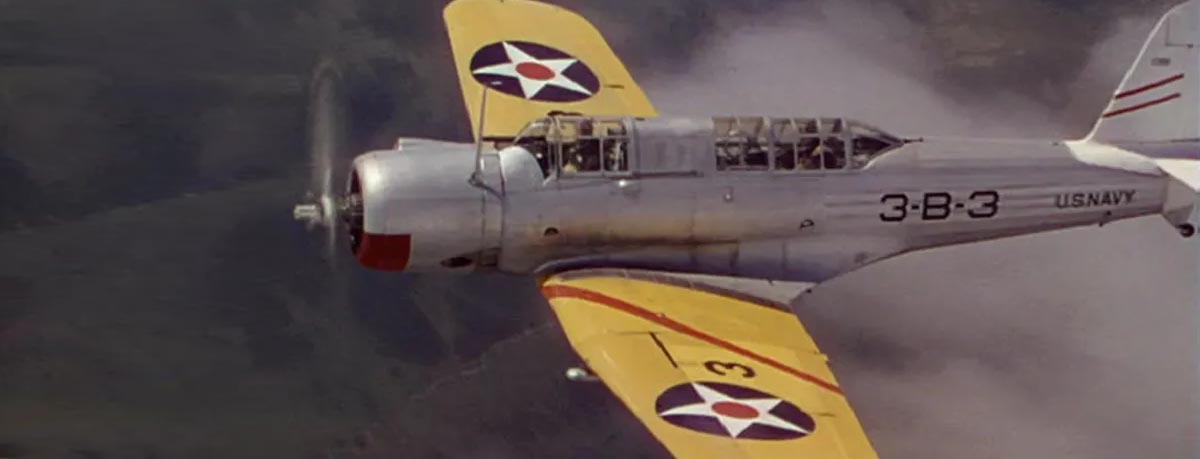
Vought SB2U Vindicator (1936)
The USN dive bomber in 1940
Two cantilever monoplan dive bombers were in service in USN carriers in December 1941: The Vought Vindicator and Douglas Dauntless. If the latter gained an immortal fame at Midway, the first faded into obscurity as one of the least appealing planes of the USN ever put into service. Despite of this, it carried great hopes and was ordered as soon as it was available by the French and British, but was so disappointing it was soon completely replaced by the Dauntless for USN carrier service, while the Fleet Air Arm discarded these in 1942 despite having no real alternative available. Why it was so ?
SB2U-3 of VS-1-1 S-16 from the Charles Daniels Photo Collection album "US Army Aircraft." San Diego museum
Initial development
The dive bomber idea was not new, it has been pioneered already in WW1, and during the early interwar, famous American pilot Billy Mitchell showed that even capital ships would be sunk by aviation. In fact, Mitchell started to test dive bombing on spotting Salmson 2 planes in 1917 and planned with the French the Salmson 4 as a ground attack aircraft and dive bomber, but the war ended before it could be delivered. In 1919 also, USMC pilot Lt. L. H. Sanderson mounted a rifle in front of the windshield of his Curtiss JN-4 and dive bombed to cover an assault on Haiti. Soon, he trained pilots on the Atlantic coast with dive bombing techniques which were used in Nicaragua. Mitchell soon favored one of the first carrier-borne aircraft, the Curtiss F8C Falcon (1925), to be sturdy enough to be used as an impromptu dive bomber, which became the modified ground-based USMC "Helldiver" first of the name.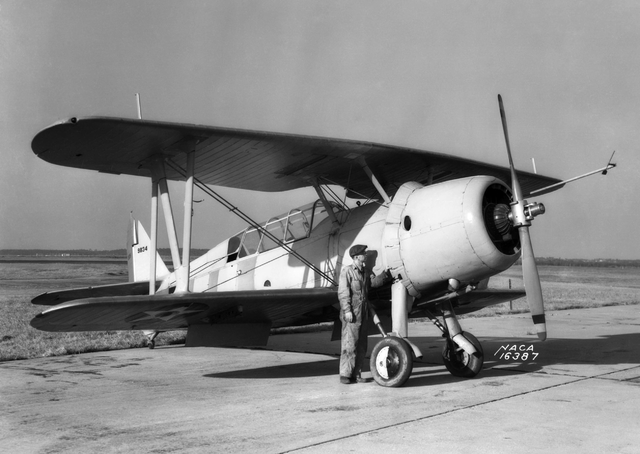
The alternative biplane XSB3U-1
In 1934, the USN BuAer (Navy's Bureau of Aeronautics) issued a requirement for a carrier-born "Scout Bomber". Six bidding companies were reviewed on the base of a two-part specification, a monoplane and a biplane. Vought answered on both categories. They will be funded and ended as prototype, the XSB2U-1 and XSB3U-1. The latter, the biplane, was considered as a backup towards U.S. Navy's known reluctance for modern designs.

SB2U-1 tested at NACA wind tunnel facility, 24 Sept. 1937
Design
The XSB2U-1 was of cantilever monoplan, meaning having low-wing configuration, and retractable tailwheel landing gear. The pilot and tail gunner sat tandem inside a long "greenhouse" type canopy running for 1/3 of the total lenght of the plane. It was roomy enough for a middle third member of the crew, ideally a radio. Construction of the fuselage called for steel tube, covered with aluminum panels, while the aft part, starting at the end of the canopy was made in wooden longerons covered with fabric. The cantilever wing was of all-metal and had foldable parts. The XSB2U-1 was give a Pratt & Whitney R-1535 Twin-Wasp Junior radial engine, which drove two-blade, constant-speed propeller. The idea behind was to use it as a dive brake.Vought's propeller braking innovative system was not however successful in its effect. By default of wing brakes, US Navy Vindicators pilots used to just lower their undercarriage as a kind od speed brake, and used shallower angles. In this dive bombing role, the Vindicator carried underbelly a single 1,000 lb (450 kg) bomb. It was released by using a swinging trapeze in order to clear off the propeller. The wings were sturdy enough to accomodate four racks, to carry smaller bombs, for a maximum bomb payload of 1,500 lb (680 kg).
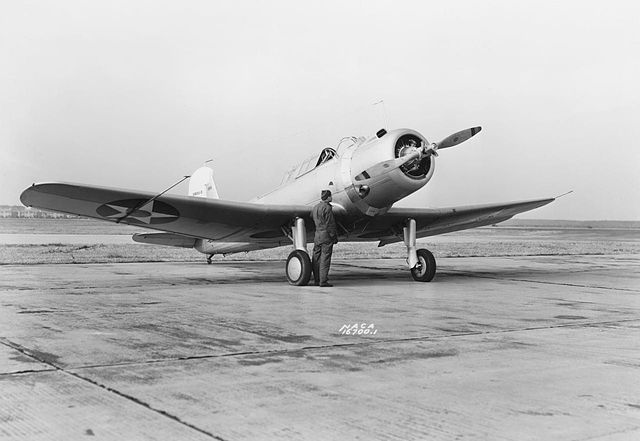
Vought XSB2U-2 Vindicator (BuNo. 1326) used for diving tests at Langley Research Center, National Advisory Committee for Aeronautics (NACA), at Hampton, Virginia (USA) in February 1939.
Competition and production
The competition pitted the Vought SB2U against the Brewster XSBA-1, Curtiss XSBC-3, Great Lakes XB2G-1, Grumman XSBF-1 and Northrop XBT-1. The Great Lakes and Grumman prototypes were eliminated but the others received greenlights for pre-production. The modified XSB2U-1 prototype was authorized for production on 15 October 1934, which started on 15 April 1936. The prototype, fitted with a 750hp R-1535-78 engine, was evaluated by the Navy on 2 July 1936, under the serial BuNo 9725. However it crashed on 20 August 1936, was repaired and nevertheless trials were completed, leading to further orders, 56 SB2U-1s on 26 October 1936, 58 SB2U-2 on 6 October 1938.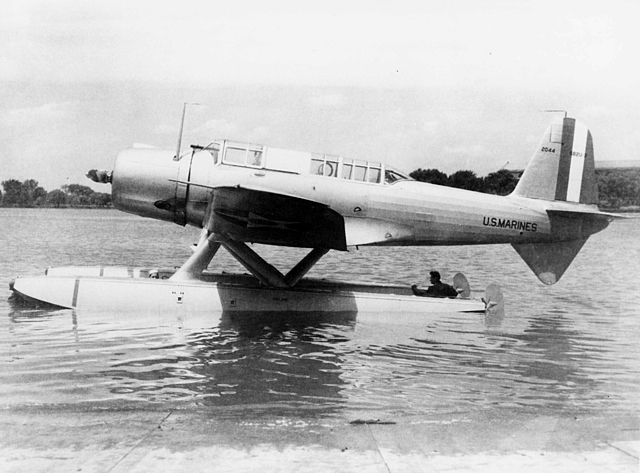
SB2U-3 floatplane version prototype, NAN-7-62 1937
SB2U-1: 54 built, using the 825hp R-1535-96 engine instead of the prototype's Wright 750hp R-1535-78 engine. For the rest, externally similar to the prototype.
SB2U-2: 58 built, minor equipment changed.
SB2U-3: 57 built, this was the heavily modified longer-range scout bomber, with a conventional wheeled undercarriage. It was also developed as a floatplane version. The increased range was obtained by having in addition to the fuselage fuel tank, integral wing tanks. To compensate for the balance, the tail span was increased. It also had the improved 825hp R-1535-102 engine, crew armor and two 0.5in guns, but this made it heavier. The prototype XSB2U-3 flew in February 1939 in land and float configuration. In the end, 57 SB2U-3s were ordered on 25 September 1939 chiefly for the US Marine Corps, while the floatplane never led to a production. In 1939, with the war starting in Europe, the British and French soon ordered more (see later).
Vought V156F-3: The French export version, 40 built for the French Navy. They were intended to be used on the carrier Béarn at first but they operated in the end from bases in Britanny, and were nearly all destroyed on the ground. Some were painted in navy blue, other were camouflaged to be of some use in the interior (notably bombing bridges and other targets).
V-156B-1: 50 built. The British version, called in British service Chesapeake Mark I. Identical to the SB2U-3 and powered by a 750hp R-1535-SB4-G engine for use by the fleet air arm.
So all in all, 260 examples all combined were produced with the export versions. A single one is now preserved at the National Naval Aviation Museum, NAS Pensacola, Florida.
The Vindicator in service

The predecessor of the Vindicator was the Curtiss XF-11C-2, renamed F11C-2 Hawk. This is not the version showed here but the previous one fitted with fixed landing gear. It carried a single 1215 kg (474 lb) bomb under its fuselage hardpoint and small bombs under each lower wing.
The Vindicator was delivered from December 1937. The first US Navy unit was VB-3, with four planes operational aboard the aircraft carrier USS Saratoga. They advantageously replaced the Curtiss BFC-2 biplane. Soon, they arrived too on the USS Lexington, Ranger, and Wasp and became a familiar sight during the 1937-40 manoeuvers. They were in turne gradually replaced by the Dauntless.
There was also a squadron, VMSB-231, present at Pearl Harbor when the attack came. The seven Vindicators were parked in the open at Ewa Field, bombed, strafed and all seven were burnt.
The last carrier to deploy them was Air Group Nine on USS Charger (AVG-30) which trained pilots for the USS Essex, pending commission. They were trained before transitioned to the Douglas SBD Dauntless in December 1942.
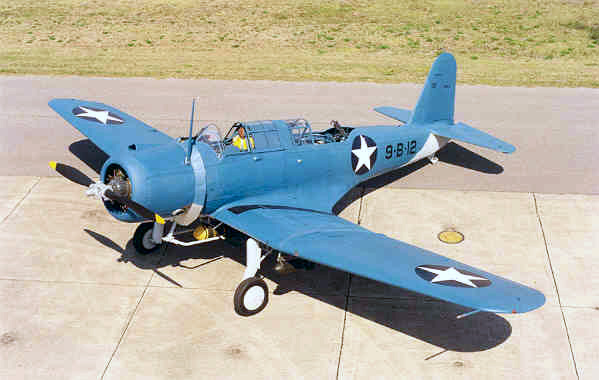
SB2U-2 VB-9 preserved at the NMNA (National Museum of Naval Aviation) Pensacola, Florida (USA), photographed in 1999, still in flying conditions.
The US Marine Corps also used the Vindicator: VMSB-131 and VMSB-241 were in fact were the only squadrons using the SB2U-3, starting in March 1941, and as later as September 1943. VMSB-241's in fact were the only ones of this type to ever saw combat at Midway in June 1942. However the plane had many detractors, most airmen by 1942 derided them, most often by comparison with the Dauntless for example, and even so with the Curtiss Helldiver. They were nicknamed "vibrators" or "wind indicators", somewhat underpowered and inaccurate in dive bombing, but their main default was just a generation gap. They were obsolete in December 1941. There was however one recipient of the Medal of Honor which used this plane to attack the Japanese cruiser Mikuma on 5 June 1942: Captain Richard E. Fleming, and the award was posthumously awarded...
In May-June 1940, the Vindicator also saw combat in Europe: The French purchased 40 V-156-F to the company, incorporated changes and specific equipment to the metric system. Deliveries started in July 1939, and crews were trained for carrier operation intended for the Béarn, but in September, it was decided to sent them to the escadrilles AB 1 and AB 3 based ashore. The Battle of France dealt heavy losses to these units, as they tried to destroy bridges and German ground targets, heavily defended by FLAK in the first weeks of May, and also provided air cover during the Evacuation of Dunkirk. They were heavy preys for the me 109, and some of AB 3 also engaged and possibly even sink an Italian submarine off Albenga. The few V-156F still in flying condition were phased out and later broken up under the armistice conditions. In total, the French ordered 90 of them. A first batch 40, delivered in time, and a second batch of 50 ordered in March 1940, which arrived too late.
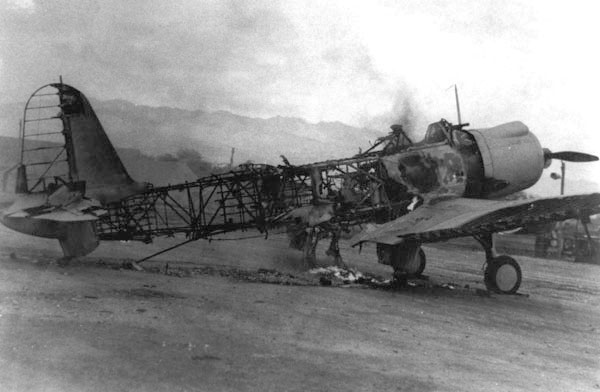
SB2U-3 burnt at Ewa airfield Pearl Harbor, 7 december 1941
Delivery of the second batch were initially planned from March 1941 and after the armistice, this batch was taken over by the British government. The plane was renamed V-156B-1 and alterted again to the imperial system. The Royal Navy's Fleet Air Arm had it renamed Chesapeake Mark I. Other modifications consisted in an additional fuel tank, additional armor and a heavier gun armament, as it was fitted with four rifle caliber machine guns instead of the single puny French forward-firing Darne machine gun. 14 Chesapeake planes arrived at the 811 Naval Air Squadron by 14 July 1941 (based in Lee-on-Solent). The squadron was soon renamed "cheesecake". It was deployed for anti-submarine patrols, but were later re-affected on the escort carrier HMS Archer. In October however British pilots sent reports about the Chesapeake's numerous issues, and it appeared they were too underpowered notably for light carrier use, more so when carrying a heavy bomb payload. Therefore, they were withdrawn from 811 Squadron by November 1941 and versed to training while the squadron received the Fairey Swordfish instead.
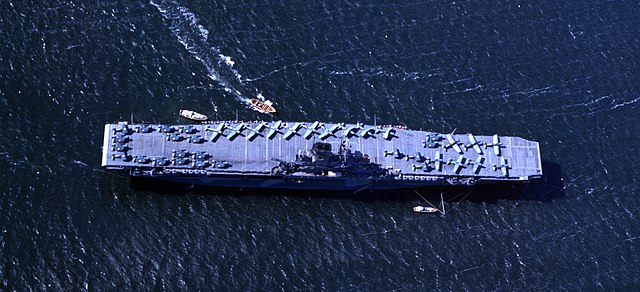
Vought SB2U of USS Wasp parked on its deck, CV-7, Casco Bay in Maine, 25 March 1942.
A bad reputation:
The Vindicator mostly succeeded in vindicating its pilots. It was outdated, in fact completely obsolete by December 1941, and accumulated problems all along its service life. This started early on, when the prototypes were tested at the flight test facility, at Naval Air Station (NAS) Anacostia in Washington DC. During one flight, the flotation gear (designed for when the plane was about to a ditch at sea) inflated in flight. Flapping bags damaged the wings but the plane managed to land, suffering arresting gear damage. Reports however were rather flattering, due to the novel package this monoplan was: Innovation such as the braced wing and tail structures, very efficient airfoil, wing flaps, retractable landing gear, constant speed controllable propeller and a highly developed NACA engine cowling were all praised by the evaluation team in 1936. When deployed in exercises in 1937 they made a sensation in the press for their modern look and long range.After another accident, the flotation gear activation switch was underlined as poorly placed. A plane that had them inflated nearly crashed out of control. The pilot recovered and nevertheless stated the Vindicator “a very forgiving and easy aircraft to fly.” The same pilot however recognized it was unfit for dive bombing, as it was not trimmed properly, its flight path was just not the one aimed at initially, and bombs missed, until the pilots were aware of this and planned an adapted trajectory for accuracy.
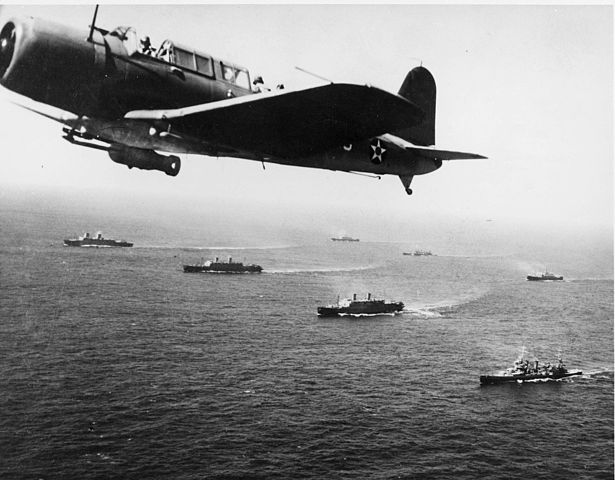
SB2U from USS Ranger as part of the Convoy WS-12 bound to Cape Town, South Africa, 1941
It was suggested wrinkling of the wing surfaces, but later, Rear Admiral Paul R. Norby, USNR just recalled the trajectory might be corrected by lowering the landing gear. The Dauntless in 1940 had large perforated flaps on the wings and dived precisely. At first, the SB2U took part of the Neutrality Patrols, reporting and tracking air, surface, or underwater threats, and performed well in these tasks. By the fall of 1941, 136 SB2U were in service, with 7 scouting and Marine scout bombing squadrons. The SBD Dauntless in fact started replacing the Vindicator in late 940 to early 1941, succeeding in Navy bombing squadrons.
The now land-based Vindicators saw however plenty of combat, notably as VMSB 241 fell on the IJN at the Battle of Midway. It was now painfully evident like the TBD Devastator with torpedo squadrons, the SB2U was now outdated. That's when it seemed violent manoeuvres when diving and the resources wrapped the aft fuselage cover clean off. Mechanics, which after each mission had to patch these with bands of tape ended calling them “Wind Indicators”. Between the worn-out conditions of the planes and young pilots not accustomed to dive bombing, instructions were given during training to glide bombing before the battle. Summary training alternated with dull anti-submarine patrols.
The SB2U-3 Vindicator, the last type in service, was however a sturdy plane: As recalled by its pilot the Second Lieutenant Daniel Cummings on 4 June 1942, after dropping a bomb on what he believed to be a destroyer from 2,000 feets in a glide-bombing attack, he was chased off by a multitude of Zeros and his gunner was quickly killed while his plane was riddled with bullets and literally "shot under him". But its survived, in the end, by hiding in the clouds and making the trip top friendly lines, his instruments destroyed and controls frozen, ditching out of gas to be picked up by a PT-boat. After 1942, it seems most existing planes were used for instruction, or just scrapped for their metal value. None was in any active frontline unit by 1943.
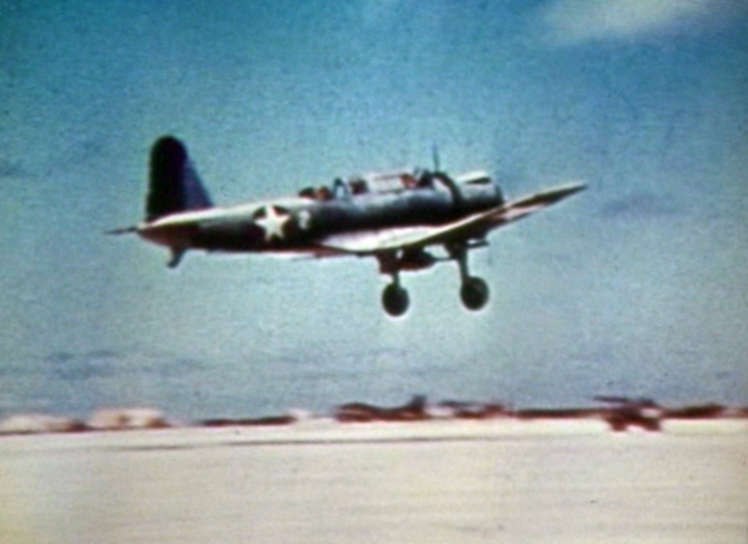
SB2U taking off from Midway in June 1942
The British used it for longer, but pilots did not appreciated the Chesapeake more. The Fleet Air Arm received the first 50 (former French order) under the ordnance name Vought-Sikorsky V-156-B1 by October 1940. They were sent to 37MU Burtonwood for evaluation and fighter tactics testing at Worthy Down in October 1941, then fighter tactics with FDU. The squadrons AL908 to 786 (in Crail) received them by June 1941. The complete order delivered in August 1941 at Boscombe Down, second-line squadrons (786, 778, 770) in turn received it. They were based respectively at Lee, Arbroath, Donistbristle, Strabane and Crail.
The 811 squadron (14 Chesapeake I by July 1941) was frontline. Pilots soon found the Chesapeake inadequate for its intended role as carrier-borne torpedo-bomber reconnaissance. It was too underpowered to take off from an escort carrier, and even from generally smaller British fleet carriers decks. They were all replaced by Swordfish Mark IIs in November 1941, on HMS Biter in 1942. The last Chesapeake in Royal Navy service was AL911, 770 Fleet Requirement squadron. It was listed at Dunino, and used for instruction until June 1944. In all, the Chesapeake served with the 768, 770, 771, 772, 776, 778, 781, 784, 786 and 811 Naval Air Squadrons.
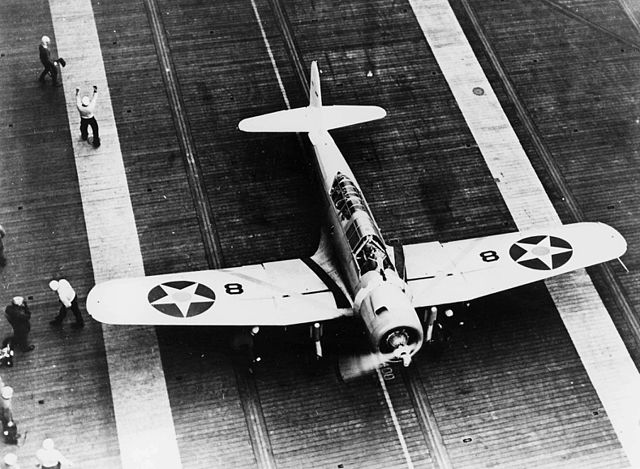
SB2U-1 of VB-3, CV-3, 1938

SB2U-2/3 Specifications | |
| Dimensions: | Length: 33 ft 11 3⁄4 in (10.357 m), Wingspan: 41 ft 10 7⁄8 in (12.773 m), Height: 14 ft 3 in (4.34 m) (tail down, propeller vertical), wing area: 305.3 sq ft (28.36 m2) |
| Weights: | Empty weight: 5,634 lb (2,556 kg), Gross weight: 7,474 lb (3,390 kg), Max takeoff weight: 9,421 lb (4,273 kg) |
| Crew: | 2: Pilot, Gunner |
| Propulsion: | Pratt & Whitney R-1535-02 Twin Wasp Jr 14-cylinder two-row air-cooled radial engine, 825 hp (615 kW) max take off |
| Fuel cap.: | 370 US gal (310 imp gal; 1,400 L) internal fuel |
| Propeller: | 2-bladed Hamilton Standard constant-speed propeller, 11 ft 0 in (3.35 m) diameter |
| Top speed: | 211 kn (243 mph, 391 km/h) at 9,500 ft (2,900 m) |
| Cruise speed: | 132 kn (152 mph, 245 km/h) (range cruise) |
| Range: | 970 nmi (1,120 mi, 1,800 km) (main and wing center-section tanks only), 1,000 lb (450 kg) bombload |
| Service ceiling: | 23,600 ft (7,200 m) |
| Rate of climb: | 1,070 ft/min (5.4 m/s) |
| Time to altitude: | 17.5 min to 15,000 ft (4,600 m) |
| Ferry Range | 2,130 nmi (2,450 mi, 3,940 km) (max internal and external fuel) |
| Armament | -single forward firing 0.50 in (12.7 mm) M2 Browning machine gun in starboard wing -single 0.50 in (12.7 mm) machine gun in flexible mount in rear cockpit -one 1,000 lb (450 kg) or 500 pounds (230 kg) bomb under fuselage -two 100 lb (45 kg) and 8 × 30 lb (14 kg) bombs under wings |
| Armor | 10 mm plane behind the pilot's seat |
Src/Read more:
https://alchetron.com/Vought-SB2U-Vindicator
http://www.airwar.ru/enc/sww2/sb2u.html
http://wp.scn.ru/en/ww2/b/566/3/1
https://www.vought.org/products/html/sb2u.html
https://navalaviationmuseum.org/history-up-close/vought/
https://en.wikipedia.org/wiki/Vought_SB2U_Vindicator
Brown, Eric, CBE, DCS, AFC, RN. with William Green and Gordon Swanborough. "Vought Chesapeake". Wings of the Navy, Flying Allied Carrier Aircraft of World War Two. Jane's 1980
Doll, Tom. SB2U Vindicator in Action (Aircraft No. 122). Carrollton, Texas: Squadron/Signal Publications Inc.
Green, William and Gordon Swanborough. "The Annals of Sugar Baker Two Uncle". Air Enthusiast, Eight, October 1978
Mondey, David. The Hamlyn Concise Guide to American Aircraft of World War II. London: Chancellor Press
Taylor, John W.R. "SB2U Vindicator". Combat Aircraft of the World from 1909 to the Present.
Thetford, Owen. British Naval Aircraft since 1912. London:Putnam, Fourth edition, 1978.
Wixey, Ken. "'Flying Fuel Cans': Vought's SB2U Vindicator". Air Enthusiast, No. 86, March/April 2000. Stamford
http://axis-and-allies-paintworks.com/e107_plugins/forum/forum_viewtopic.php?404=
Gallery of models:
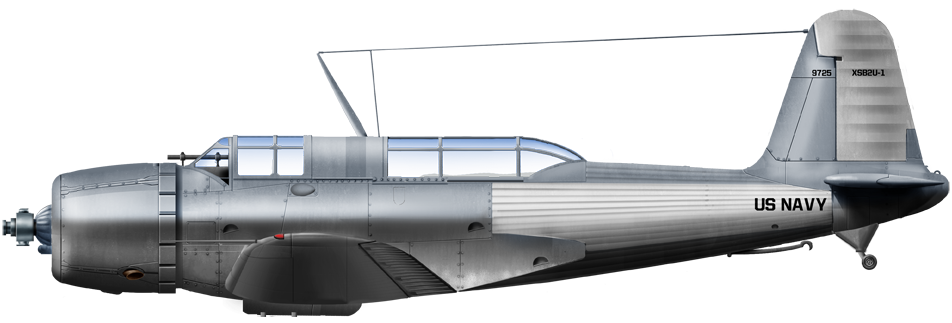
The XSB2U-1 prototype in 1936
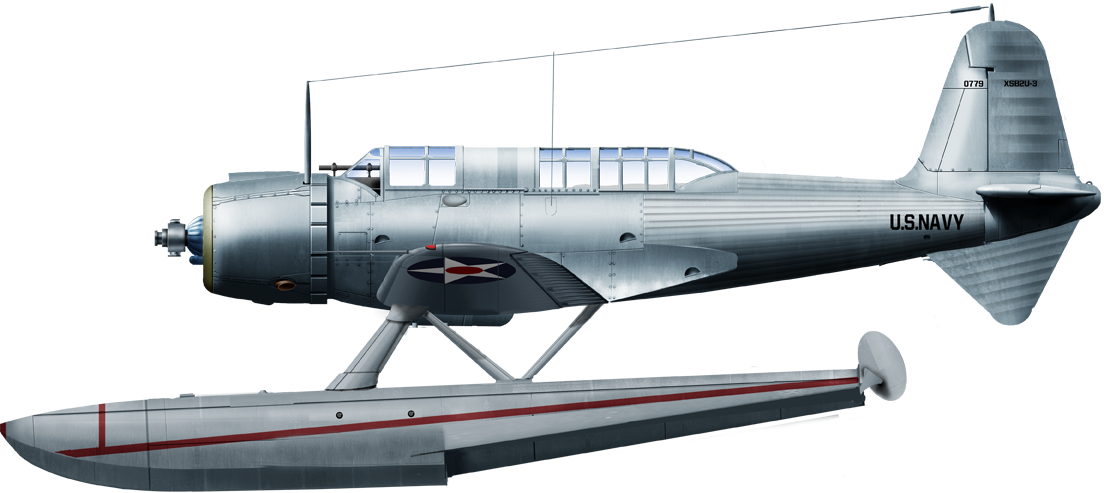
The only floatplane version, alternative prototype of the SB2U-3 in 1938. Colors are prospective
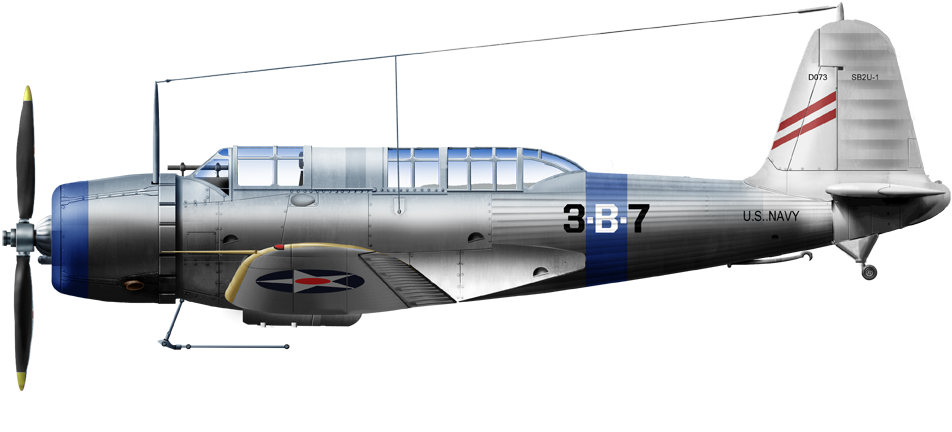
SB2U-1 onboard CV3 USS Saratoga, 1939
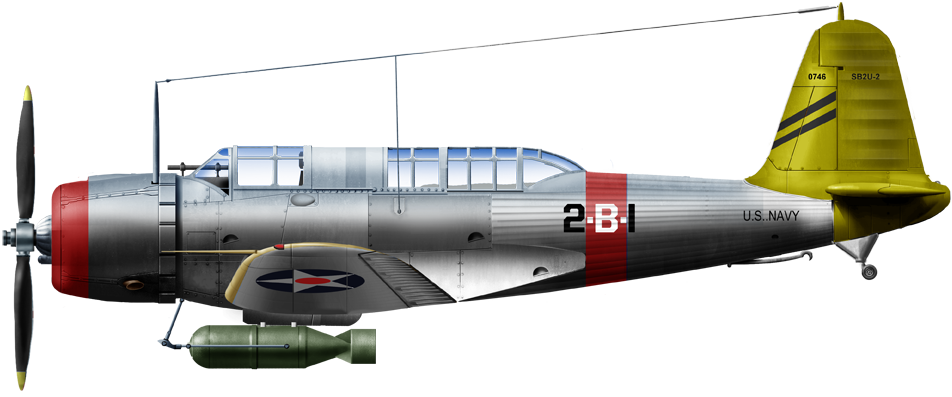
SB2U-2 of Sqn. Commander VB USS Lexington, 1939

SB2U-2 onboard USS Yorktown, Squadron Commander, 1939
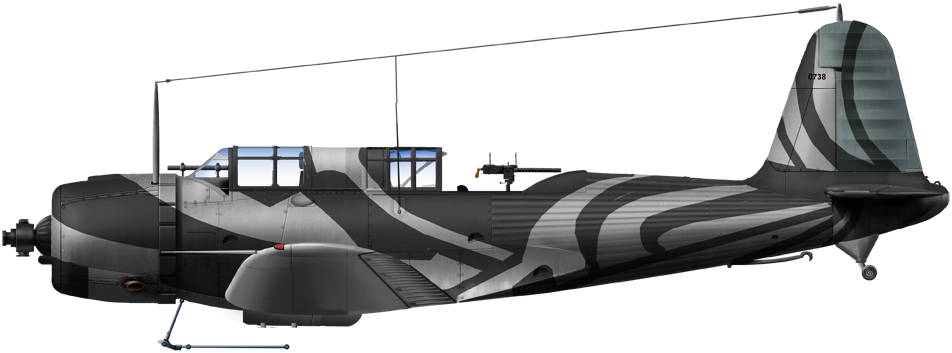
SB2U-3 North Island, Caifornia 1940, test camouflage scheme No4
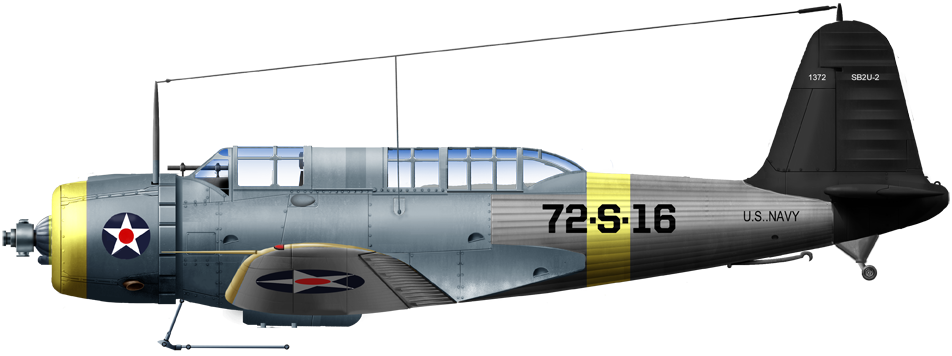
SB2U-2 of VS72 onboard USS wasp, circa 1940
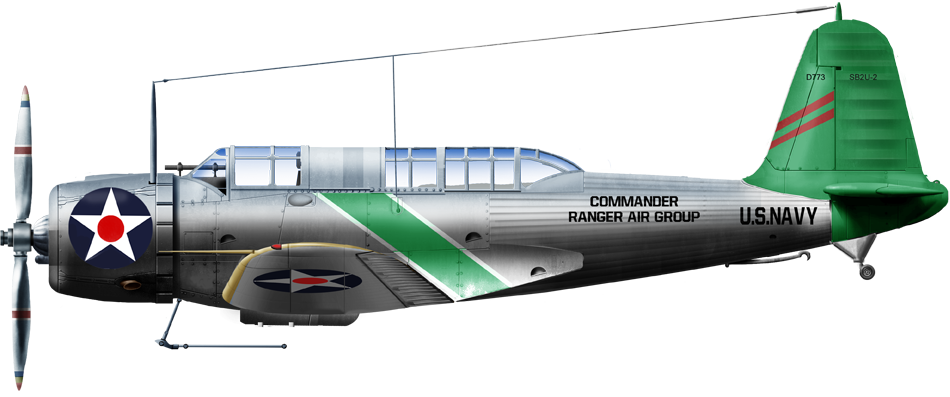
SB2U-1 of Air Group Commander USS Ranger 1940
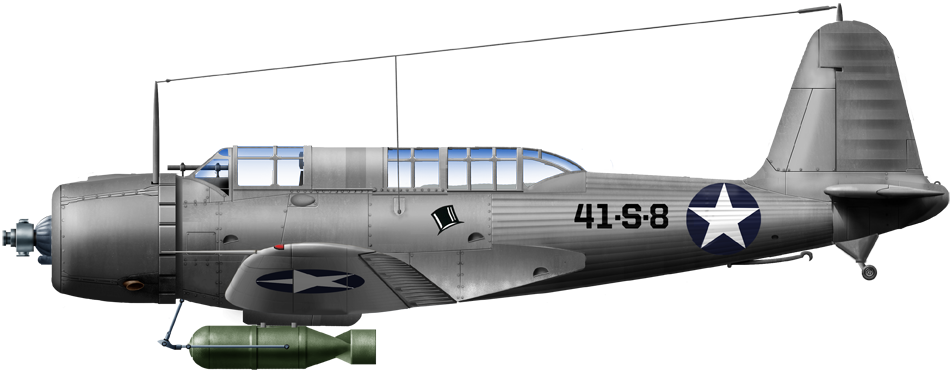
SB2U-3 of VS41 onboard USS Ranger, 1941
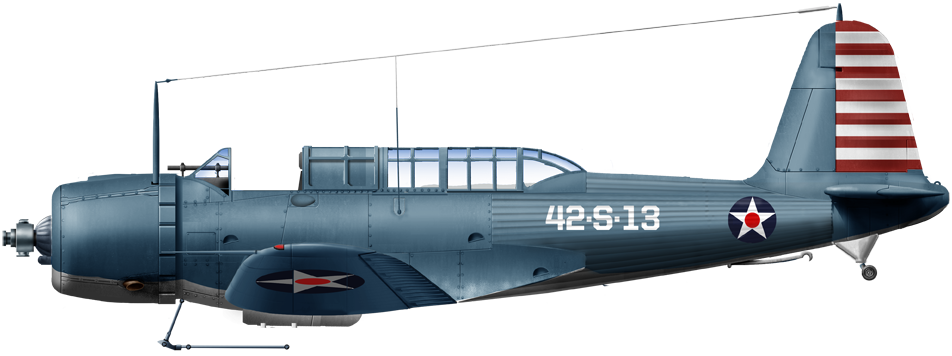
SB2U-2 of VS42 onboard CV4 USS Ranger circa early 1941
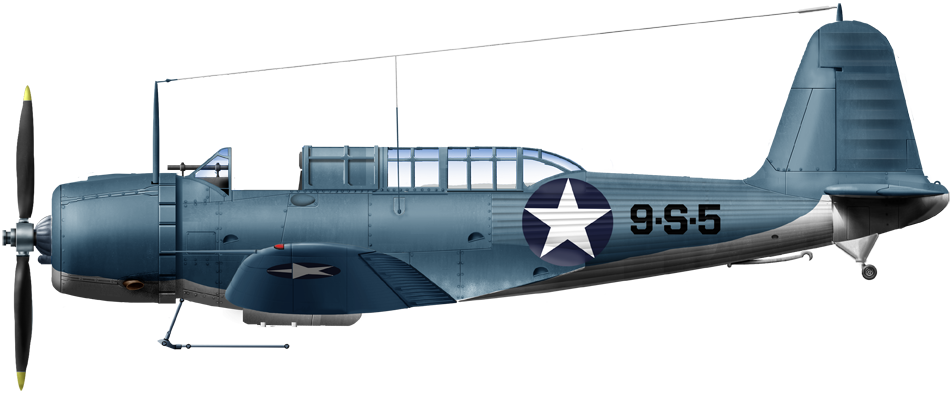
Vought SB2U-2 of VS9 onboard ACV30 USS Charger, circa 1942

SB2U-3 of VMSB-231 at Ewa airfield, Hawaii, 7 December 1941

SB2U-3 Vindicator Buno 2045, Lt. Marmande VMSV-241, Midway Island, June 1942
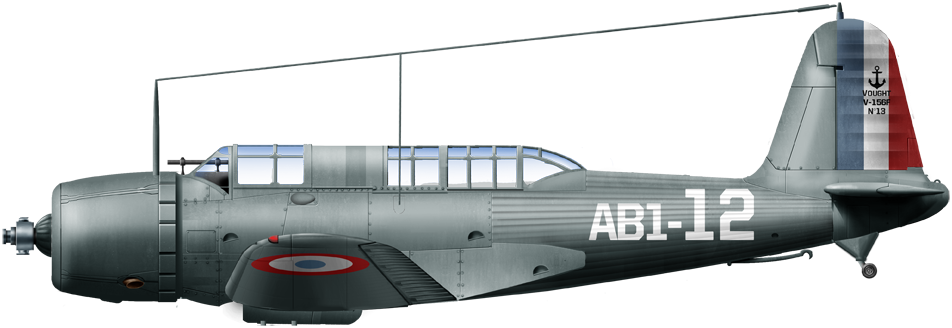
French Marine Vought V-156F-3 Escadrille AB-1, January 1940
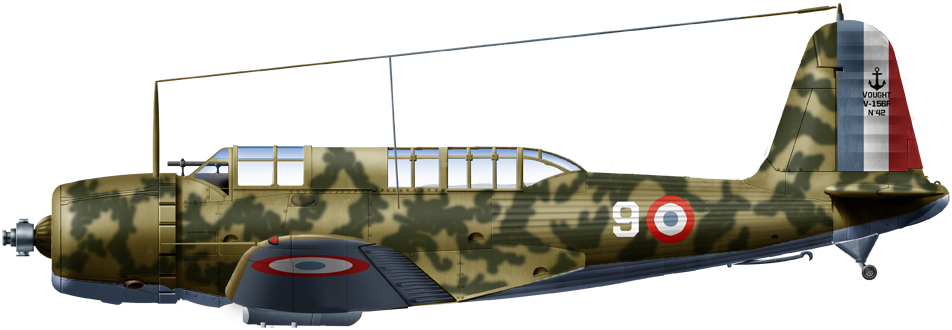
French V-156F Hyeres, summer 1940

SB2U-2 Vindicator, Scouting 9 (VS-9)USS Charger AVG-30, waiting for USS Essex to be commissioned 1942
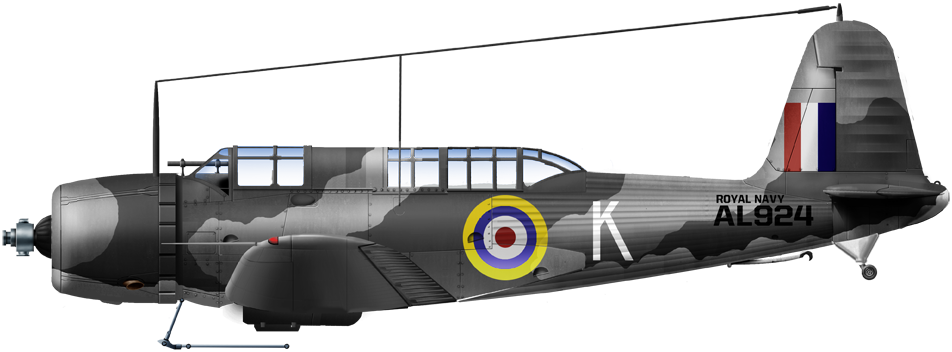
V-156B-1 Chesaspeake Mark.I 811 Sqn, FAA 1942
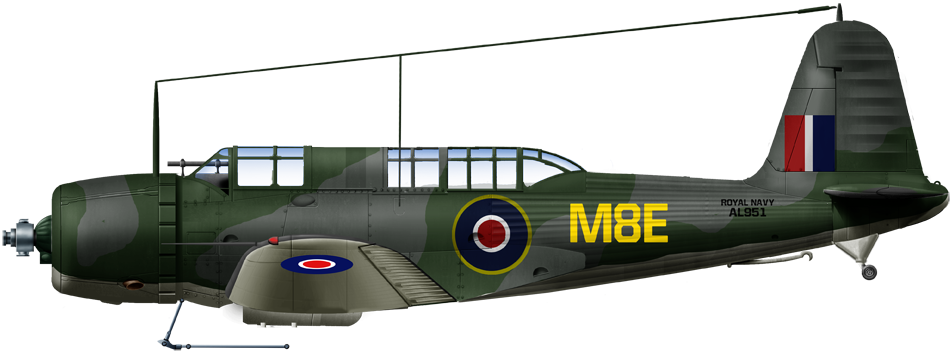
British fleet air arm V-156B-1 771 Sqn. RNAS, Twatt circa 1943
Photos
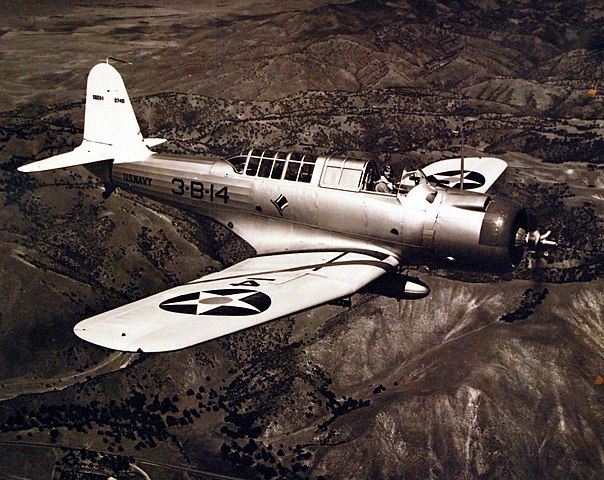
Vought-Sikorsky SB2U-1 “Vindicator” (Bu# 0740), Scouting Bombing Plane, over San Joaquin Valley, California, June 28, 1938. Note, the “Tophatters” squadron insignia. U.S. Navy Photograph, now in the collections of the National Archives. (2016/02/02). - National Museum of the U.S. Navy
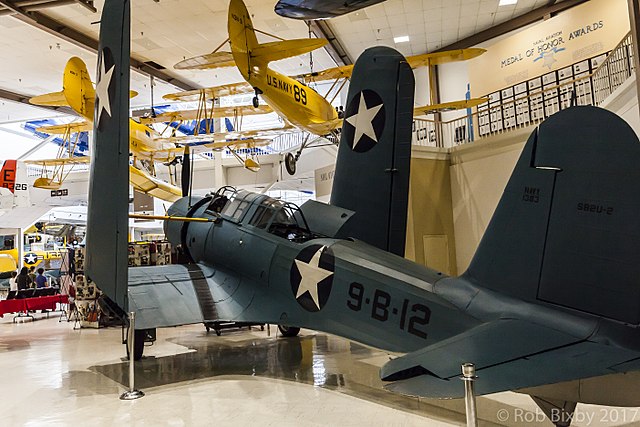
Surviving SB2U, Naval Air Museum, photo by Rob Bixby from Jacksonville, FL, USA (cc)
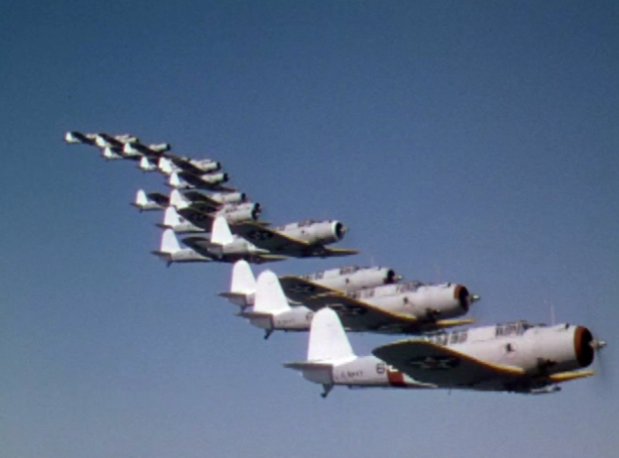
SB2Us filmed in formation in 1941 over Hawaii
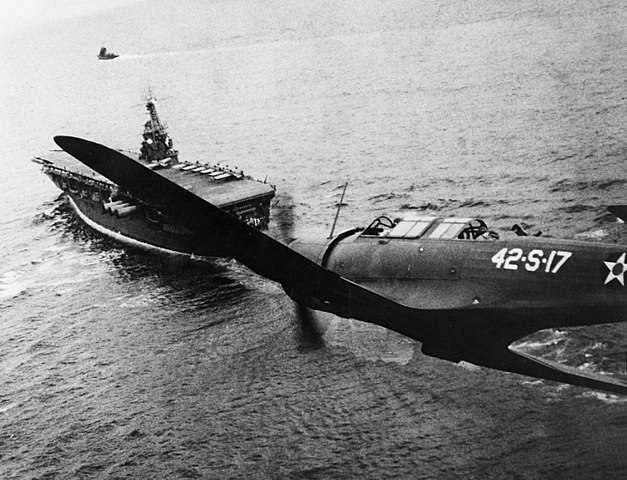
Vought SB2U of VS-42 in flight over USS Ranger CV-4 on 4 December 1941
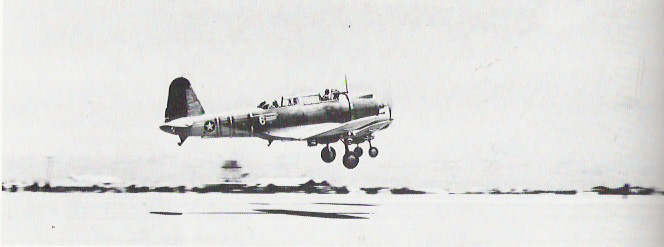
SB2U-3 of VMSB-241 filmed by John Ford taking off from Midway
- Lohner E (1913)
- Macchi M3 (1916)
- Macchi M5 (1918)
- Ansaldo ISVA (1918)
- Sopwith Baby (1916)
- Short 184 (1916)
- Fairey Campania (1917)
- Sopwith Cuckoo (1917)
- Felixstowe F.2 (1917)
- Friedrichshafen FF 33 (1916)
- Albatros W4 (1916)
- Albatros W8 (1918)
- Hanriot HD.2
- Grigorovitch M5
- IJN Farman MF.7
- IJN Yokosho Type Mo
- Yokosho Rogou Kougata (1917)
- Yokosuka Igo-Ko (1920)
- Curtiss N9 (1916)
- Aeromarine 39
- Vought VE-7
- Douglas DT (1921)
- Boeing FB.5 (1923)
- Boeing F4B (1928)
- Vought O2U/O3U Corsair (1928)
- Blackburn Blackburn (1922)
- Supermarine Seagull (1922)
- Blackburn Ripon (1926)
- Fairey IIIF (1927)
- Fairey Seal (1930)
- LGL-32 C.1 (1927)
- Caspar U1 (1921)
- Dornier Do J Wal (1922)
- Rohrbach R-III (1924)
- Mitsubishi 1MF (1923)
- Mitsubishi B1M (1923)
- Yokosuka E1Y (1923)
- Nakajima A1N (1927)
- Nakajima E2N (1927)
- Mitsubishi B2M (1927)
- Nakajima A4N (1929)
- CANT 18
WW1
✠ K.u.K. Seefliegerkorps:
 Italian Naval Aviation
Italian Naval Aviation
 RNAS
RNAS
 Marineflieger
Marineflieger
 French Naval Aviation
French Naval Aviation
 Russian Naval Aviation
Russian Naval Aviation
 IJN Air Service
IJN Air Service
 USA
USA
Interwar
 Interwar US
Interwar US
 Interwar Britain
Interwar Britain
 Interwar France
Interwar France
 Interwar Germany
Interwar Germany
 Interwar Japan
Interwar Japan
 Interwar Italy
Interwar Italy
- Curtiss SOC seagull (1934)
- Grumman FF (1931)
- Curtiss F11C Goshawk (1932)
- Grumman F2F (1933)
- Grumman F3F (1935)
- Northrop BT-1 (1935)
- Grumman J2F Duck (1936)
- Consolidated PBY Catalina (1935)
- Brewster/NAF SBN-1 (1936)
- Curtiss SBC Helldiver (1936)
- Vought SB2U Vindicator (1936)
- Brewster F2A Buffalo (1937)
- Douglas TBD Devastator (1937)
- Vought Kingfisher (1938)
- Curtiss SO3C Seamew (1939)
- Douglas SBD Dauntless (1939)
- Grumman F4F Wildcat (1940)
- F4U Corsair (NE) (1940)
- Brewster SB2A Buccaneer (1941)
- Grumman TBF/TBM Avenger (1941)
- Consolidated TBY Sea Wolf (1941)
- Grumman F6F Hellcat (1942)
- Curtiss SB2C Helldiver (1942)
- Curtiss SC Seahawk (1944)
- Grumman F8F Bearcat (1944)
- Ryan FR-1 Fireball (1944)
- Douglas AD-1 Skyraider (1945)
Fleet Air Arm
- Fairey Swordfish (1934)
- Blackburn Shark (1934)
- Supermarine Walrus (1936)
- Fairey Seafox (1936)
- Blackburn Skua (1937)
- Short Sunderland (1937)
- Blackburn Roc (1938)
- Fairey Albacore (1940)
- Fairey Fulmar (1940)
- Grumman Martlet (1941)
- Hawker sea Hurricane (1941)
- Brewster Bermuda (1942)
- Fairey Barracuda (1943)
- Fairey Firefly (1943)
- Grumman Tarpon (1943)
- Grumman Gannet (1943)
- Supermarine seafire (1943)
- Blackburn Firebrand (1944)
- Hawker Sea Fury (1944)
IJN aviation
- Aichi D1A "Susie" (1934)
- Mitsubishi A5M "Claude" (1935)
- Nakajima A4N (1935)
- Yokosuka B4Y "Jean" (1935)
- Mitsubishi G3M "Nell" (1935)
- Nakajima E8N "Dave" (1935)
- Kawanishi E7K "Alf" (1935)
- Nakajima B5N "Kate" (1937)
- Kawanishi H6K "Mavis" (1938)
- Aichi D3A "Val" (1940)
- Mitsubishi A6M "zeke" (1940)
- Nakajima E14Y "Glen" (1941)
- Nakajima B6N "Jill" (1941)
- Mitsubishi F1M "pete" (1941)
- Aichi E13A Reisu "Jake" (1941)
- Kawanishi E15K Shiun "Norm" (1941)
- Nakajima C6N Saiun "Myrt" (1942)
- Yokosuka D4Y "Judy" (1942)
- Kyushu Q1W Tokai "Lorna" (1944)
Luftwaffe
- Arado 196 (1937)
- Me109 T (1938)
- Blohm & Voss 138 Seedrache (1940)
Italian Aviation
- Savoia-Marchetti S.55
- IMAM Ro.43/44
- CANT Z.501 Gabbiano
- CANT Z.506 Airone
- CANT Z.508
- CANT Z.511
French Aeronavale
- GL.300 (1926-39)
- Levasseur PL.5 (1927)
- Potez 452 (1935)
- Loire 210 (1936)
- Loire 130 (1937)
- LN 401 (1938)
Soviet Naval Aviation
- Shavrov SH-2 (1928)
- Tupolev TB-1P (1931)
- Beriev MBR-2 (1930)
- Tupolev MR-6 (1933)
- Tupolev MTB-1 (1934)
- Beriev Be-2 (1936)
- Polikarpov I16 naval (1936)
- Tupolev MTB-2 (1937)
- Ilyushine DB-3T/TP (1937)
- Beriev Be-4 (1940)
-
Skoda Š-328V
R-XIII Idro
Fokker C.XI W (1934)
WW2
- De Havilland Sea Vixen
- Hawker Sea Hawk
- Supermarine Scimitar
- Blackburn Buccaneer
- Hawker Sea Harrier
- Douglas A4 Skyhawk
- Grumman F9F Panther
- Vought F8 Crusader
- McDonnell-Douglas F-4 Phantom-II
- North Am. A5 Vigilante
- TU-142
- Yak 38 forger
☢ Cold War
✧ NATO
 Fleet Air Arm
Fleet Air Arm
 US Navy
US Navy
☭ Warsaw Pact
Merch

Seafire Mark 45; HMS Pretoria Castle

Zeros vs its aversaries

Aichi D3A “Val” Junyo

Mitsubishi A5M poster

F4F wildcat

Macchi M5

SBD Dauntless Coral Sea

SBD Dauntless USS Enterprise

SBD-4 CV22